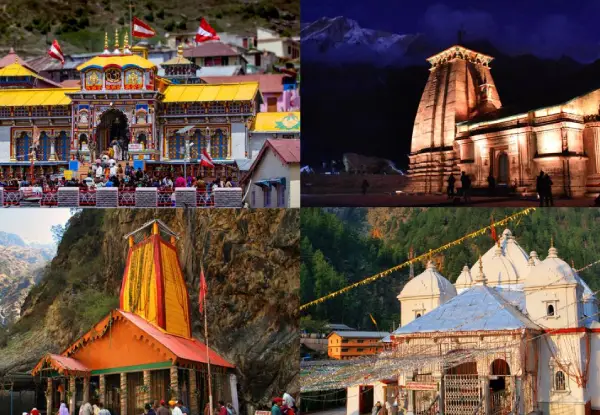25
Exploring Local Traditions During the Char Dham Yatra
The Char Dham Yatra is not just a sacred pilgrimage for the four revered temples of Yamunotri, Gangotri, Kedarnath, and Badrinath; It is a deep, immersive journey in the spiritual and cultural heritage of the Indian Himalayas. As thousands of devotees plan their Char Dham Yatra 2025, they are not only preparing for divine philosophy but also for the opportunity to see the rich local customs, rituals, and traditions that define life in the high-altitude villages of Uttarakhand. To deepen your spiritual experience, understanding, and attachment with local traditions along the Char Dham route is a deep, rewarding aspect of the pilgrimage.
Char Dham Marg's Ritual Landscape
Every step of the Char Dham Yatra is infused with sacred rituals and spiritual practices that have been carried forward through generations. From the very beginning in Haridwar or Rishikesh, pilgrims are welcomed into the world of ancient Vedic mantras, Agni rituals (havan), and Ganga Aarti. These cities act as a spiritual entrance and set the tone for the rest of the journey, where daily prayers, temple customs, and local folklore are uninterruptedly included in the path of pilgrimage.
In each of the Char Dham temples, there are unique rituals and traditions performed by local priests, most of which belong to the ancestral priest's lineage. In Yamunotri, the ritual of cooking rice in hot water springs near the temple is a symbol of giving food to the goddess. In Gangotri, the pilgrim takes a holy dip in the icy water of the river Bhagirathi before praying at the temple. In Kedarnath, the sacred light of Lord Shiva is worshiped with ash and ghee, and the royal temple echoes with the sound of mantras and bells. In Badrinath, the priests of the temple perform wide artis, and Tulsi Viva (ritual marriage of Lord Vishnu with Tulsi) is a grand local festival during the closing season of the temple.
Folk culture and Community Life
One of the richest aspects of the Char Dham Yatra is a chance to inspect and interact with local communities that live in Himalayan villages. These communities bound by centuries-old customs follow a rhythm of life which is deeply associated with nature spiritual, and closely. Since pilgrims travel through towns such as Barcot, Harsil, Guptkashi, and Joshimath, they are often witness to traditional dance forms, folk music, and festivals that echo the myths of Hindu epics such as the Mahabharata and Ramayana. The simplicity, hospitality and devotion of the local people leave a permanent impression on pilgrims. Their customs - such as offering of Charna Nanna (Holy Water), decorating homes with rangoli during festivals, or organizing community anchor (free food) - to reduce the culture contained in service, spirituality and flexibility.
Traditional food with Pilgrimage
Food is an integral part of the cultural experience during the Char Dham Yatra. As pilgrims cross the route, they taste traditional Garhwali and Kumaoni dishes, which are both nutritious and delicious. Cuisines such as Elu's gutke, Mandua bread, Chanso, and Zhangora Kheer are not only satisfactory after a long day's journey, but also associate pilgrims with the unique agricultural practices of the region. Most of the foods during the dharmashals, local restaurants, or buffalo (community feast) are vegetarian and true (pure), which are designed according to religious guidelines. Sharing a simple food with fellow pilgrims and locals becomes a moment of spiritual relationship and cultural praise.
Pilgrim Participation in Local Festivals
Depending on the time of your Char Dham Yatra 2025, you can be lucky to participate in local festivals and temple processions or participate. Gangotri has some major spiritual ceremonies seen with Ganga Dussehra, Badri-Kedar Utsav in Badrinath, and Kedarnath Closing ceremony route. During these events, temples are decorated with flowers and lights, devotional music fills the air, and spiritual energy is clear. Pilgrims often describe these moments as deeply transformative. Participating in these traditional events provides not only to inspect visitors, but also allows to be part of the sacred culture that defines the region.
Role of Local Priests and Monasteries
During the Char Dham Yatra, the guidance of local priests (Panda) plays an important role. These priests not only perform religious rituals, but also educate the pilgrims about legends, proper conduct and the right methods of worship. Many families have a long relationship with a specific priest dynasty, and they are considered a sacred duty during the journey. In addition, Mathas (Mathvasi Institutes) established by Adi Shankaracharya and other saints continue to preserve Vedic knowledge and local spiritual traditions. Pilgrims visiting these centers can engage in spiritual discourses and seek blessings, which can make the experience more informative.
Booking with Local Insight
To fully appreciate and engage with traditions along the Char Dham Marg, it is important to travel with a journey program that respects the spiritual and cultural rhythm of the region. Booking your pilgrimage through a knowledgeable and reliable tour provider can make all the difference. Companies like Travel to India ensure that your journey is not only about reaching the temples, but in fact about the holy land, its people and its customs experience. As you book the Char Dham Yatra 2025 with Travel To India, consider packages that include local interactions, trips to cultural sites, and enough time to explore each dham and its surrounding traditions.

